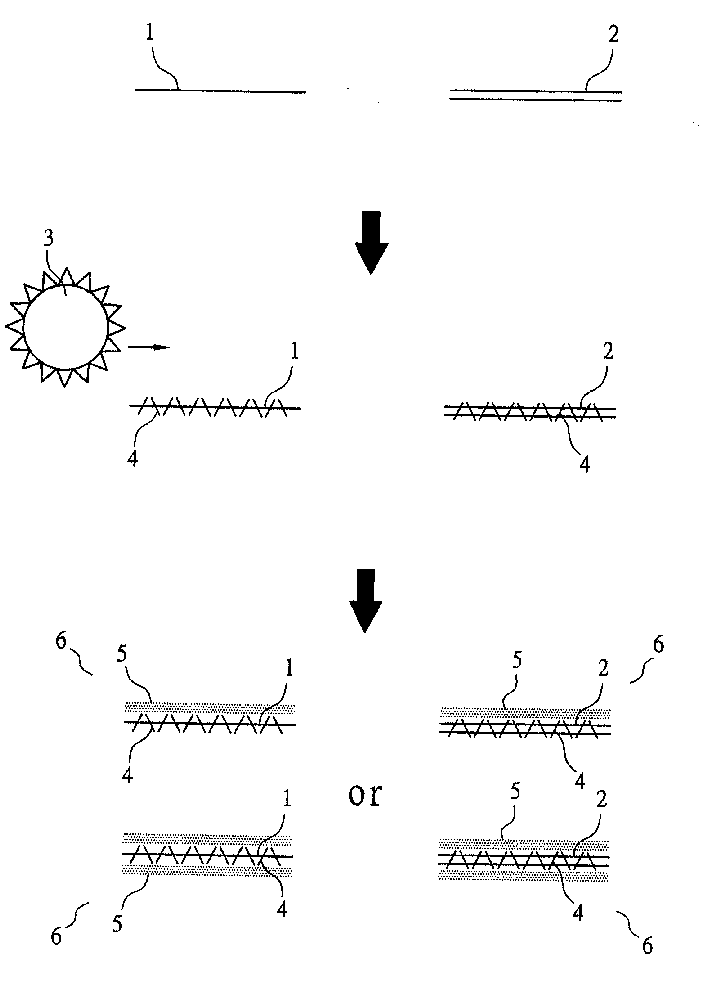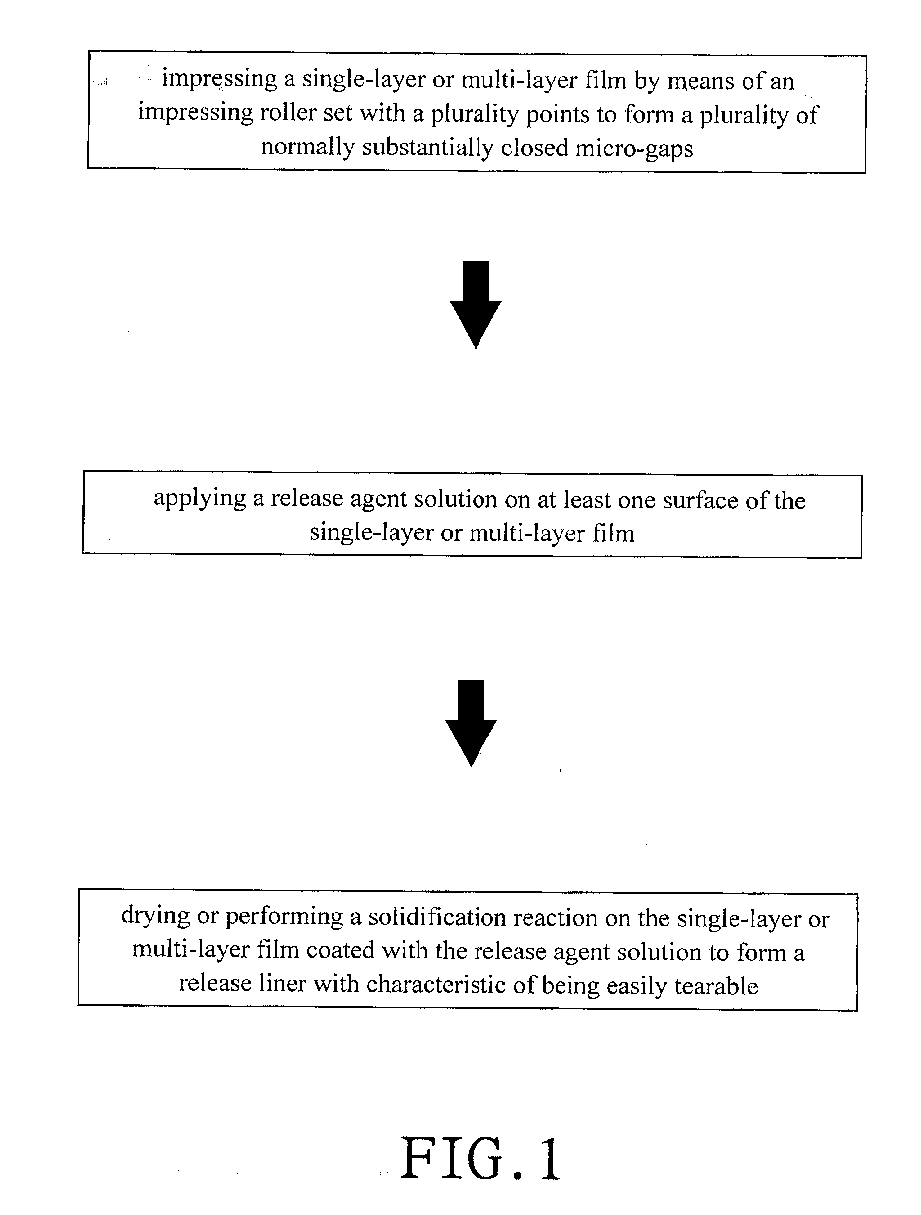Method of manufacturing a release liner
a technology of release paper and manufacturing method, which is applied in the direction of film/foil adhesives, coatings, chemistry apparatus and processes, etc., can solve the problems of contaminating the environment, fiber debris, easy peeling or torn of release paper prior to use, etc., and achieves the effect of easy torn, easy torn, and high mechanical strength
- Summary
- Abstract
- Description
- Claims
- Application Information
AI Technical Summary
Benefits of technology
Problems solved by technology
Method used
Image
Examples
first embodiment
[0047] Base substrates of KBOPP / AC / PE film and KPET / AC / PE film are employed. Shin-Etsu solvent bas silicone release agent solution, KS-3703 / KS-3800 is a release agent and toluene is a solvent. The prime silicone release agent and the solvent are mixed in three to one ratio prior to adding 2% CAT-PL-50T platinum catalyst. Use No. 8 meyer bar to coat the prepared release agent solution on corona treated surface of the PE film, KBOPP and KPET films. Next, heat the same in a heating compartment at 100° C. for one minute. Amount of coated silicone is 0.8 g / m2. Age the same at 25° C. with a relative humidity of 60% for one day. Pick up a 1″ wide release liner strip sample from the prepared material and stick with a 1″ Tesa7454 adhesive tape on the surface with release agent coated thereon. Adhere the surface of non-silicone coated release liner to a flat 304 stainless steel test plate via a double-side adhesive tape. Roll the same two times with a 2 Kg rubber roller. Keep the same at a co...
second embodiment
[0049] Base substrates of KBOPP / AC / PE film and KPET / AC / PE film are employed. A low temperature cured Shin-Etsu silicone release agent solution, KS-847T is solvent base, and toluene is as a solvent. Both release agent solution and the solvent are mixed prior to adding 2% CAT-PL-50T platinum catalyst. Use No. 8 meyer bar to coat the prepared release agent formulation solution on the corona treated PE, KBOPP and KPET surfaces of the base release liners. Next, heat the same in a heating compartment at 90° C. for one minute for curing. Amount of coated silicone is 0.7 g / m2. Age the same at 25° C. with a relative humidity of 60% for one day. Pick up a 1″ wide release liner strip sample from the prepared material and stick with a 1″ wide Tesa7454 adhesive tape on the surface with release agent coated thereon. Adhere the surface of the non-silicone coated release liner to a flat 304 stainless steel test plate via a double-side adhesive tape. Roll the same two times with a 2 Kg rubber roller...
third embodiment
[0051] Base substrates of KBOPP / AC / PE film and KPET / AC / PE film are employed. Al wt % of polyvinyl octadecyl carbamate non-silicone release agent solution. The release agent and the toluene solvent are mixed prior to coating the prepared solution on the corona treated PE, KBOPP and KPET surfaces of the base release liners by No. 150 mesh gravure coater. Next, heat the same in a heating compartment at 100° C. for one minute. Amount of coated weight is 0.07 g / m2. Dry the same in 65° C. with humidity of 60% for one day. Pick up a 1″ wide release liner strip sample from the prepared material and stick with a 1″ wide Tesa7454 acrylic adhesive tape and WQ4012 rubber adhesive tape on the surface with release agent coated thereon. PSTC-6 test method is applied: measure release force (in unit of g / inch) of the release liner by means of a universal tensile tester in 180 degrees peel angle with a peel speed of 0.3 m per minute and 50 m per minute respectively at different temperatures as tabula...
PUM
 Login to View More
Login to View More Abstract
Description
Claims
Application Information
 Login to View More
Login to View More - R&D
- Intellectual Property
- Life Sciences
- Materials
- Tech Scout
- Unparalleled Data Quality
- Higher Quality Content
- 60% Fewer Hallucinations
Browse by: Latest US Patents, China's latest patents, Technical Efficacy Thesaurus, Application Domain, Technology Topic, Popular Technical Reports.
© 2025 PatSnap. All rights reserved.Legal|Privacy policy|Modern Slavery Act Transparency Statement|Sitemap|About US| Contact US: help@patsnap.com



